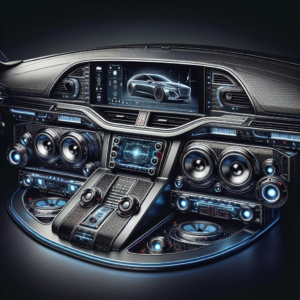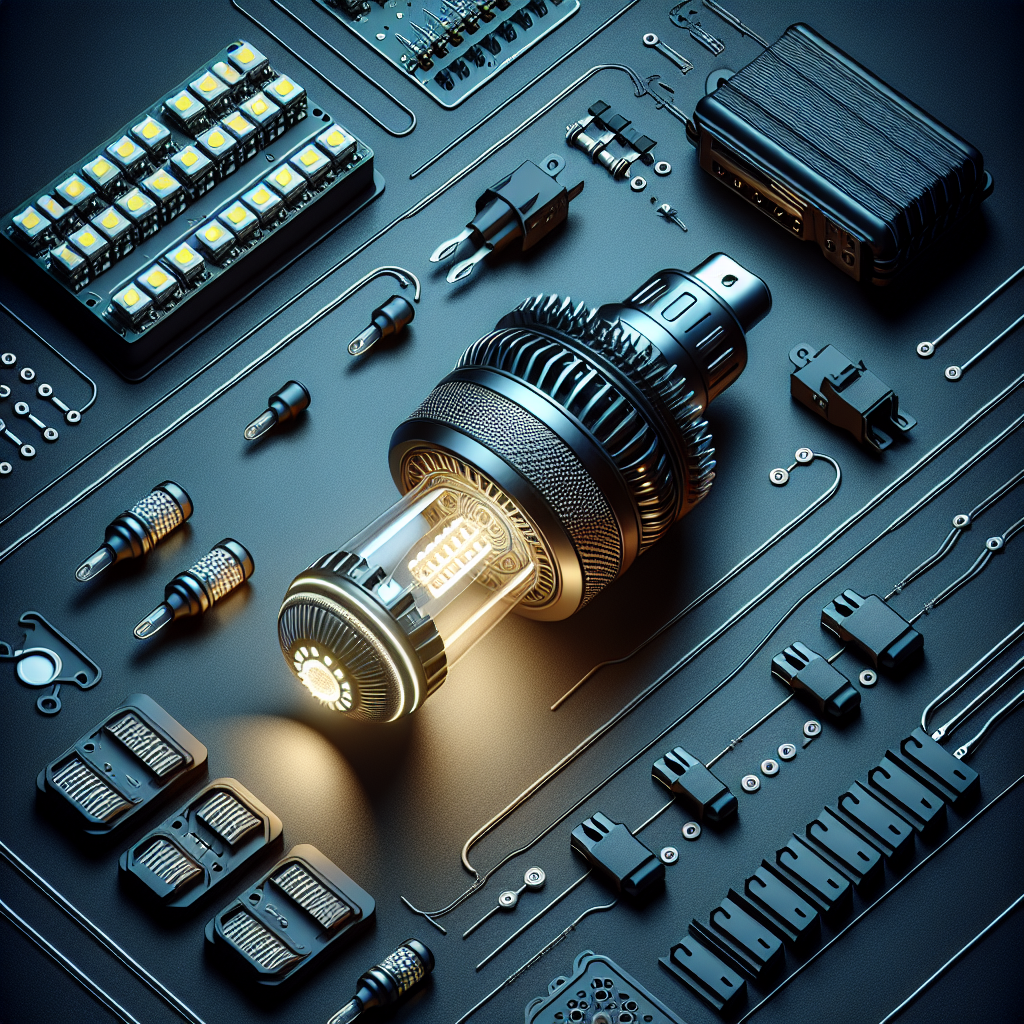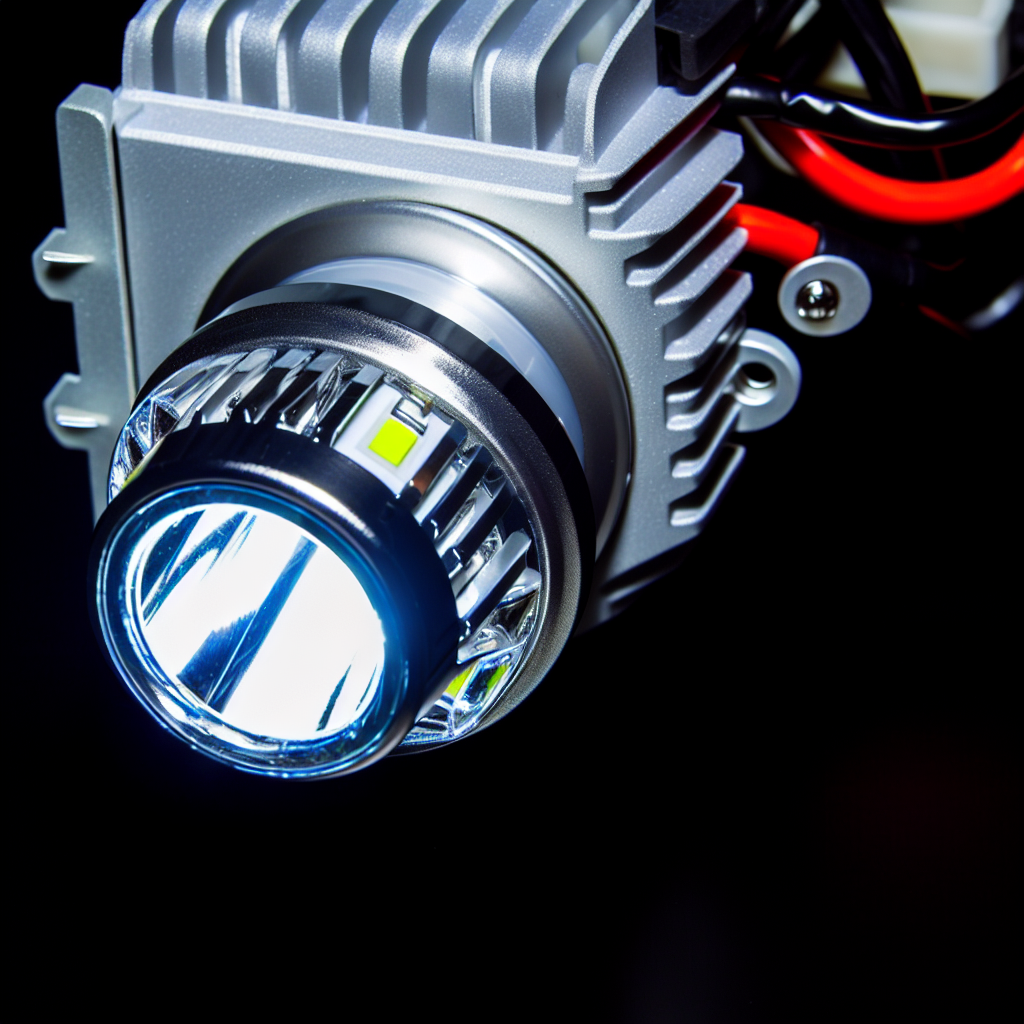Introduction
Audio Vision is a reputable supplier of LED and HID lighting products in West Covina, CA. We offer a wide range of lighting solutions for residential, commercial, and automotive applications. Our products are known for their quality, durability, and energy efficiency.
LEDs (Light-Emitting Diodes) and HIDs (High-Intensity Discharge) are modern lighting technologies that have gained popularity due to their numerous advantages over traditional lighting options. These technologies offer improved brightness, longer lifespan, energy savings, and a wide range of color options.
Benefits of LED HIDs
LED HID lighting, also known as High Intensity Discharge lighting, offers numerous benefits compared to traditional lighting options. Here are some advantages of using LED HIDs:
1. Energy Efficiency: LED HIDs are highly energy-efficient, consuming significantly less power than traditional lighting options. This can result in lower energy bills and reduced carbon footprint.
2. Brightness: LED HIDs produce a bright and intense light, making them ideal for areas that require high levels of illumination, such as industrial spaces or outdoor areas.
3. Longevity: LED HIDs have a longer lifespan compared to traditional lighting options. They can last up to 100,000 hours, reducing the need for frequent replacements and maintenance.
4. Instant Start: LED HIDs provide instant illumination without any warm-up time. This makes them suitable for applications where immediate lighting is required, such as in emergency situations or security lighting.
5. Color Rendering: LED HIDs offer better color rendering, allowing for more natural and accurate representation of colors. This is especially beneficial for areas where color accuracy is crucial, such as in art galleries or retail spaces.
6. Versatility: LED HIDs come in various shapes, sizes, and color temperatures, allowing for flexibility in design and application. They can be used for both indoor and outdoor lighting requirements.
In conclusion, LED HIDs provide numerous benefits over traditional lighting options, including energy efficiency, brightness, longevity, instant start, color rendering, and versatility. If you are looking to upgrade your lighting system, consider LED HIDs for a more efficient and effective lighting solution.
Types of LED HIDs
There are several types of LED HIDs available in the market today. Each type has its own unique features and benefits, making it important to choose the right one for your specific needs. Here are some of the most common types:
1. LED Headlights: LED headlights are a popular choice for car owners who want to upgrade their lighting system. They provide brighter and more focused light, improving visibility on the road. LED headlights are also energy-efficient, as they consume less power and last longer compared to traditional halogen headlights.
2. LED Bulbs: LED bulbs are a versatile lighting option that can be used for various applications. They are available in different sizes and shapes, making them suitable for both indoor and outdoor use. LED bulbs are known for their energy efficiency, long lifespan, and durability.
3. LED Conversion Kits: LED conversion kits are designed to replace traditional HID or halogen lighting systems with LED lights. These kits include all the necessary components to make the conversion process quick and easy. LED conversion kits are available for different types of vehicles, including cars, trucks, and motorcycles.
4. LED Flood Lights: LED flood lights are commonly used for outdoor lighting applications, such as illuminating parking lots, sports fields, and building exteriors. They provide bright and wide-angle light coverage, making them ideal for large open spaces. LED flood lights are energy-efficient and can significantly reduce energy consumption compared to traditional lighting options.
Types of LED HIDs
There are several types of LED HIDs available in the market today. Each type has its own unique features and benefits, making it important to choose the right one for your specific needs. Here are some of the most common types:
1. LED Headlights: LED headlights are a popular choice for car owners who want to upgrade their lighting system. They provide brighter and more focused light, improving visibility on the road. LED headlights are also energy-efficient, as they consume less power and last longer compared to traditional halogen headlights.
2. LED Bulbs: LED bulbs are a versatile lighting option that can be used for various applications. They are available in different sizes and shapes, making them suitable for both indoor and outdoor use. LED bulbs are known for their energy efficiency, long lifespan, and durability.
3. LED Conversion Kits: LED conversion kits are designed to replace traditional HID or halogen lighting systems with LED lights. These kits include all the necessary components to make the conversion process quick and easy. LED conversion kits are available for different types of vehicles, including cars, trucks, and motorcycles.
4. LED Flood Lights: LED flood lights are commonly used for outdoor lighting applications, such as illuminating parking lots, sports fields, and building exteriors. They provide bright and wide-angle light coverage, making them ideal for large open spaces. LED flood lights are energy-efficient and can significantly reduce energy consumption compared to traditional lighting options.
Choosing the Right LED HIDs for Your Application
When selecting LED HIDs for your specific application, there are a few key factors to consider:
Brightness: LED HIDs come in varying levels of brightness, measured in lumens. It is important to choose a bulb that provides the right amount of brightness for your needs. Consider factors such as the size of the space you are lighting and the intended purpose of the lighting.
Color Temperature: LED HIDs are available in a range of color temperatures, which affect the color of the light emitted. Lower color temperatures produce warmer, yellowish light, while higher color temperatures produce cooler, bluish light. Consider the atmosphere you want to create and the aesthetics of the space when choosing the color temperature.
Compatibility: Make sure the LED HIDs you choose are compatible with your existing fixtures or sockets. Different bulbs have different bases and sizes, so it is essential to check the specifications and ensure a proper fit.
Energy Efficiency: LED HIDs are known for their energy efficiency, but it is still important to compare the energy consumption of different bulbs. Look for bulbs with a high lumens-to-watts ratio to ensure maximum energy savings.
Durability and Lifespan: Consider the durability and lifespan of the LED HIDs. Look for bulbs with a long lifespan to reduce the frequency of bulb replacements. Additionally, consider factors such as shock resistance and waterproof ratings if the lighting will be used in outdoor or harsh environments.
By carefully considering these factors, you can choose the right LED HIDs that meet your specific needs and provide the desired lighting effects.
Installation of LED HIDs
When it comes to installing LED HID lighting, it is important to follow the manufacturer’s instructions carefully to ensure proper installation. Here are some general steps to follow:
- 1. Gather all the necessary tools and equipment for the installation, such as screwdrivers, wiring connectors, and electrical tape.
- 2. Start by disconnecting the vehicle’s battery to prevent any electrical accidents.
- 3. Locate the existing headlights and remove the old bulbs. Be careful not to touch the new LED HID bulbs with your bare hands, as the oils from your skin can damage the bulbs.
- 4. Install the LED HID bulbs in place of the old ones, making sure they are securely seated in the socket.
- 5. Connect the wiring harness to the LED HID bulbs, following the manufacturer’s instructions.
- 6. Mount the LED HID ballasts, which are responsible for regulating the power supply to the bulbs. These ballasts can be mounted in various locations, such as the engine bay or the fender wells.
- 7. Connect the wiring harness from the ballasts to the vehicle’s electrical system, again following the manufacturer’s instructions.
- 8. Double-check all connections to ensure they are secure and properly insulated.
- 9. Reconnect the vehicle’s battery.
- 10. Test the LED HID lighting to ensure it is functioning properly.
It is always recommended to have a professional install LED HID lighting if you are unsure or uncomfortable with the installation process. This will ensure that the lights are installed correctly and will provide optimal performance and longevity.
For professional installation of LED HID lighting in West Covina, CA, you can contact Audio Vision at (909) 983-4500 or visit their website at audiovisionie.com.
Installation of LED HIDs
When it comes to installing LED HIDs, it is important to follow the manufacturer’s instructions and guidelines. The installation process may vary depending on the type of LED HID you are using, but here are some general steps to follow:
- Begin by disconnecting the power source to ensure safety during the installation.
- Remove the existing lighting fixture or bulb.
- Prepare the new LED HID bulb by removing any protective packaging or covers.
- Insert the LED HID bulb into the socket or fixture, making sure it is securely in place.
- If necessary, connect any wiring or connectors that may be included with the LED HID bulb.
- Turn on the power source and test the LED HID lighting to ensure it is working properly.
- Adjust the angle or direction of the LED HID lighting, if needed, to achieve the desired lighting effect.
- Dispose of the old lighting fixture or bulb in accordance with local regulations.
If you are unsure about the installation process, it is recommended to consult a professional electrician to ensure proper installation and to avoid any electrical hazards. At Audio Vision, we offer installation services for LED HIDs and other lighting solutions. Call us at (909) 983-4500 for more information or visit our website at audiovisionie.com.
Cost-Benefit Analysis of LED HIDs
When considering the cost-benefit analysis of LED HIDs, it is important to take into account the initial investment, as well as the long-term savings and benefits.
1. Initial Investment:
LED HIDs typically have a higher upfront cost compared to traditional lighting options. However, this initial investment can be offset by the long lifespan of LED bulbs and the energy savings they provide.
2. Energy Efficiency:
LED HIDs are highly energy-efficient, using significantly less energy compared to traditional lighting options. This can result in substantial savings on electricity bills over the lifetime of the bulbs.
3. Longevity:
LED HIDs have a much longer lifespan compared to traditional lighting options, such as incandescent or fluorescent bulbs. LED bulbs can last up to 25 times longer, which means fewer replacements and reduced maintenance costs.
4. Durability and Reliability:
LED HIDs are more durable and reliable compared to traditional lighting options. They are resistant to shock, vibrations, and extreme temperatures, making them ideal for outdoor and industrial applications. This increased durability reduces the need for frequent replacements.
5. Environmental Impact:
LED HIDs are environmentally friendly because they do not contain harmful chemicals like mercury. Additionally, their energy efficiency helps reduce carbon emissions, making them a sustainable choice.
Overall, despite the higher initial cost, the long-term savings, energy efficiency, durability, and environmental benefits of LED HIDs make them a cost-effective choice for various applications. To discuss the specific cost-benefit analysis for your lighting needs, please contact Audio Vision at (909) 983-4500 or visit our website at audiovisionie.com.
LED HIDs vs. Traditional HIDs
LED HIDs and traditional HIDs are both popular choices for lighting solutions, but they have some key differences that may influence your decision. Here are a few factors to consider:
- Energy Efficiency: LED HIDs are known for their high energy efficiency. They consume less power and produce more light output compared to traditional HIDs. This can result in significant energy savings over time.
- Lifespan: LED HIDs have a longer lifespan compared to traditional HIDs. They can last up to 50,000 hours or more, while traditional HIDs typically last around 20,000 hours. This means less frequent replacement and maintenance.
- Instant Start: LED HIDs provide instant full brightness when turned on, while traditional HIDs require warm-up time to reach their full light output. This can be beneficial in applications where immediate lighting is required.
- Color Temperature: LED HIDs offer a wider range of color temperatures, allowing for more customization in lighting design. Traditional HIDs usually have a limited range of color options.
- Environmental Impact: LED HIDs are more environmentally friendly compared to traditional HIDs. They have no mercury content and produce less heat, reducing greenhouse gas emissions and the risk of fires.
LED HIDs vs. Traditional HIDs
When comparing LED HIDs to traditional HIDs, there are several key differences to consider. LED HIDs offer numerous advantages over traditional HIDs, making them a popular choice for lighting applications.
Energy Efficiency: LED HIDs are highly energy-efficient compared to traditional HIDs. LED bulbs require less power to produce the same amount of light, resulting in lower energy consumption and reduced electricity costs.
Longevity: LED HIDs have a longer lifespan compared to traditional HIDs. LED bulbs can last up to 50,000 hours or more, while traditional HIDs typically last around 20,000 hours. This means less frequent bulb replacements and reduced maintenance costs.
Instant On/Off: LED HIDs provide instant illumination when switched on, without any warm-up time. In contrast, traditional HIDs require a warm-up period before reaching full brightness.
Color Temperature Options: LED HIDs offer a wide range of color temperature options, allowing you to choose the desired lighting ambiance for your application. Traditional HIDs have limited color temperature options.
Environmental Friendliness: LED HIDs are considered more environmentally friendly compared to traditional HIDs. LED bulbs do not contain hazardous materials like mercury, which is often present in traditional HID bulbs.
- Lower energy consumption
- Longer lifespan
- Instant on/off
- Wide range of color temperature options
- Environmentally friendly
When considering LED HIDs vs. traditional HIDs, it is clear that LED HIDs offer numerous advantages in terms of energy efficiency, longevity, instant illumination, color temperature options, and environmental friendliness.
Audio Vision | Car Audio West Covina

Looking for car audio west covina? Audio Vision is the best place to buy car audio in West Covina.
Product Brand: Audio Vision
Product Currency: USD
Product Price: $299
Product In-Stock: InStock
5




